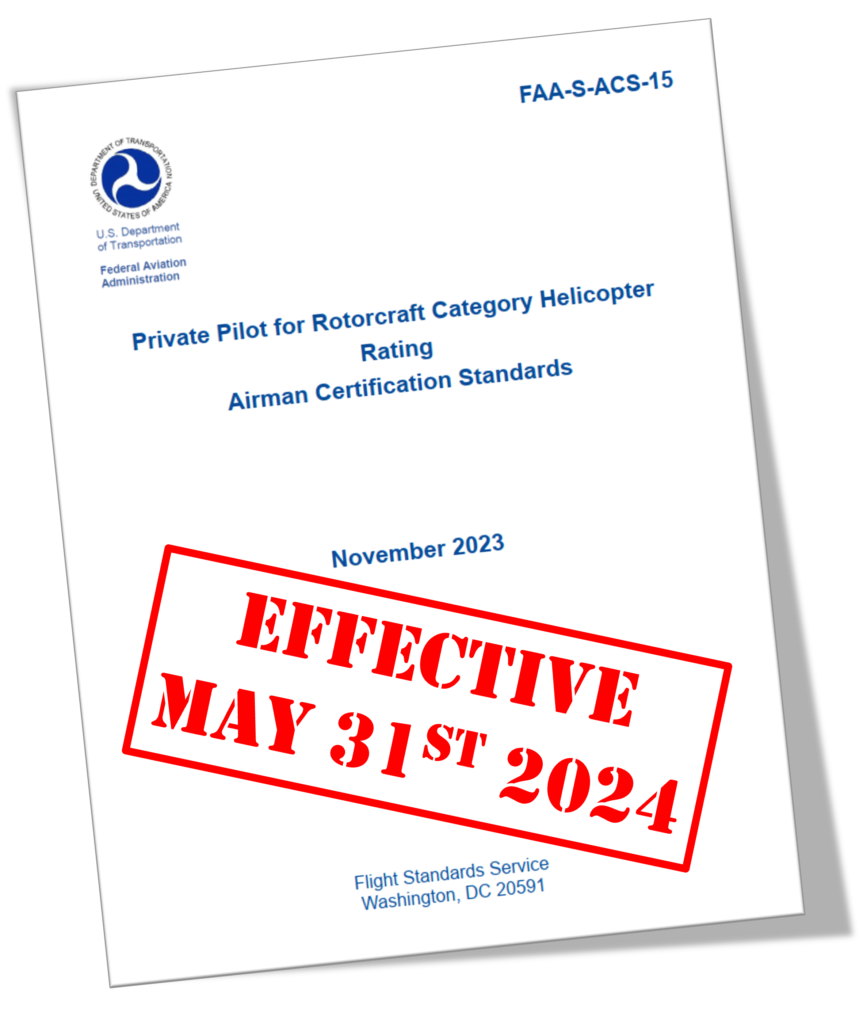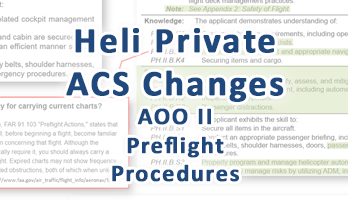Effective May 31st, 2024 the FAA Helicopter Private PTS (along with Commercial, Instrument & CFI) will be replaced by the new FAA Helicopter Private Pilot ACS (Airman Certification Standards). In this article we will cover the BIG changes from PTS to ACS for the Helicopter Private Pilot.
General ACS Changes
But first, if the ACS is completely new to you, before reading the specific changes below check out our ACS overview article and ACS overview video covering the new ACS code system, task structure, required elements, changes to special emphasis areas, risk management and more.
Follow Along
If you want to follow along with the changes, grab the free PDF from the FAA’s ACS webpage or purchase the paper version (Amazon affiliate links to help support HTV) below. Paper versions also come with the ACS Companion Guide for Pilots (FAA-G-ACS-2).
Helicopter ACS Private Pilot Part 1, The BIG Changes Video
Auto Airspeed Changes
In the Helicopter Private Pilot PTS the autorotation airspeed standards was +/- 5 knots, that has now been changed in the new Helicopter Private Pilot ACS to +/- 10 knots. This applies to straight-in, 180 autos and simulated power failures at altitude.
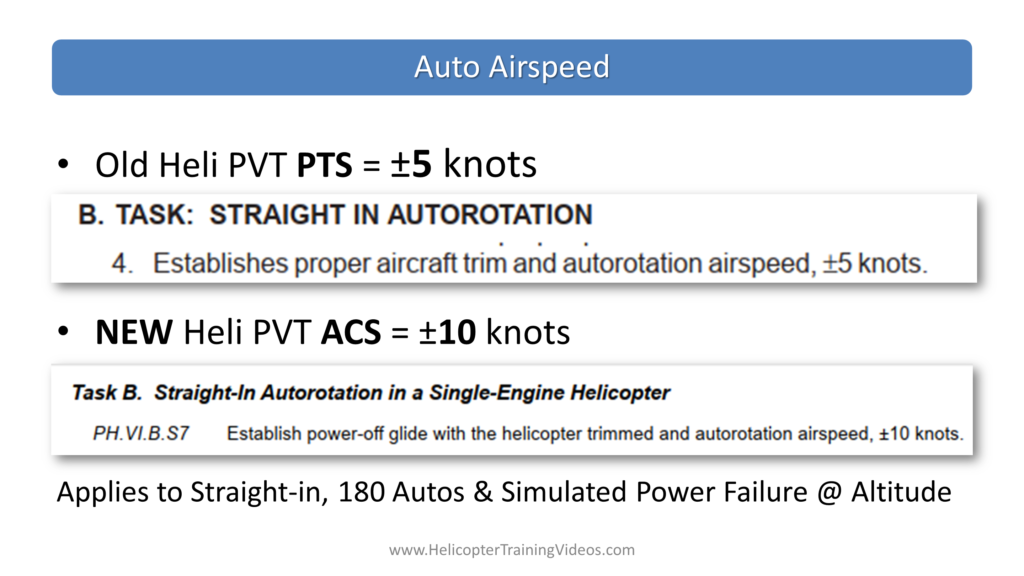
Max Performance Takeoff Airspeed Changes
The FAA gives with one hand and takes away with the other… Now the climb airspeed (once the helicopter is clear of obstacles) for max performance has been tightened up. In the Helicopter Private Pilot PTS the climb airspeed standards was +/- 10 knots, that has now been changed in the new Helicopter Private Pilot ACS to +/- 5 knots.
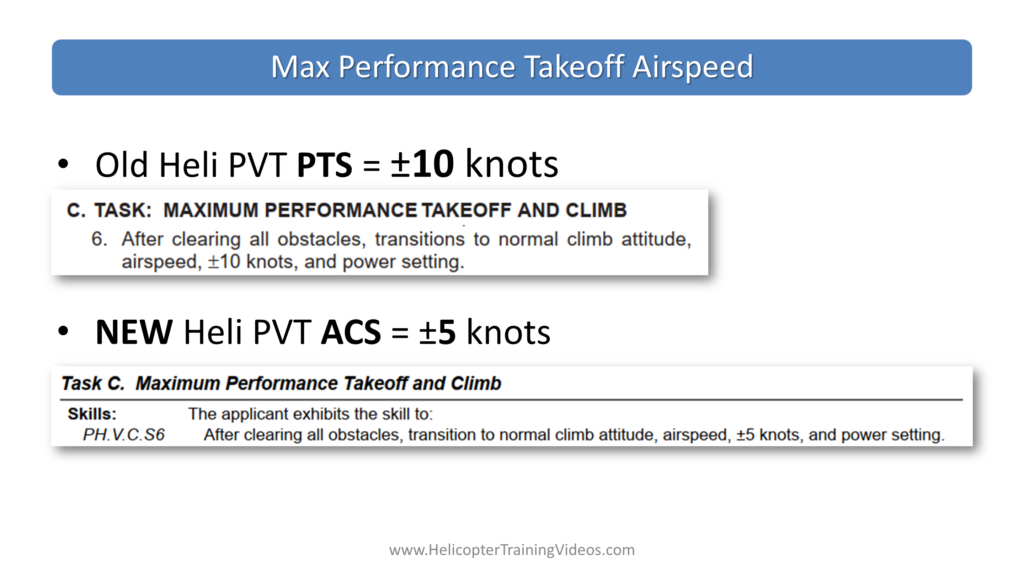
Autorotation 300′ AGL Rollout
The new Helicopter Private Pilot ACS has added a requirement to complete turns by 300‘ AGL for the 180 autos (renamed autorotation with turns). The ACS Appendix 2 (Safety of Flight) says that if the applicant fails to roll out of the turn by 300‘ AGL, the evaluator will require the applicant to initiate a power recovery and go around, and the task will be graded as unsatisfactory. It also requires a minimum entry of 700‘ AGL.
For many this will probably require an adjustment in training to enter at a higher altitude. Apart from the obvious improvement to safety, I think this is a good thing as a higher altitude entry will allow more time for the applicant to make adjustments to hit their spot.
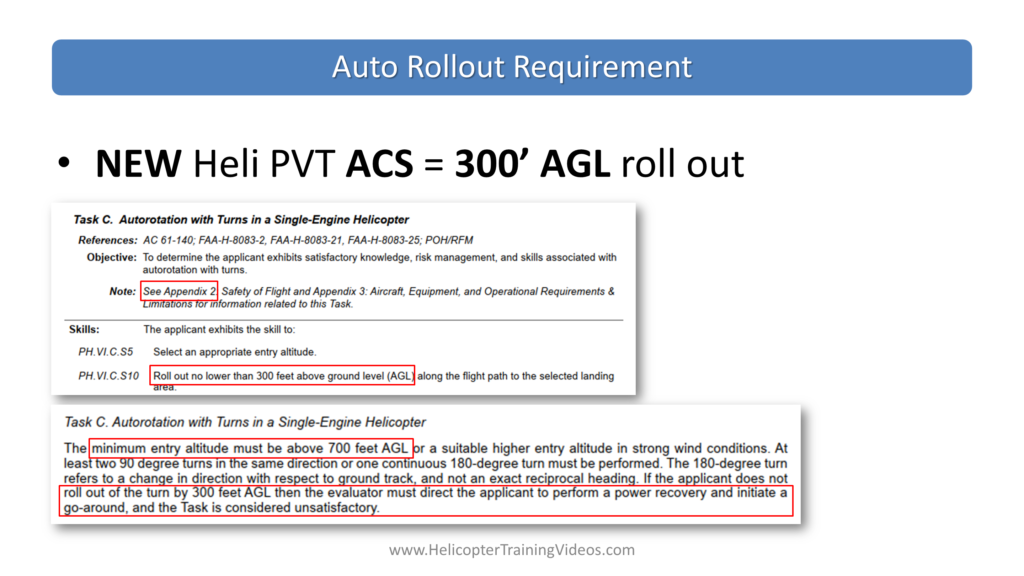
Flight Deck Management
The task has been renamed from Cockpit Management, but the content itself is not too different. But the big difference is the note to Appendix 2, which says if the applicant fails to use ADM SRM/CRM on any task, that task will will be unsatisfactory and the applicant will also get a Flight Deck Management unsatisfactory task too – bonus fail!
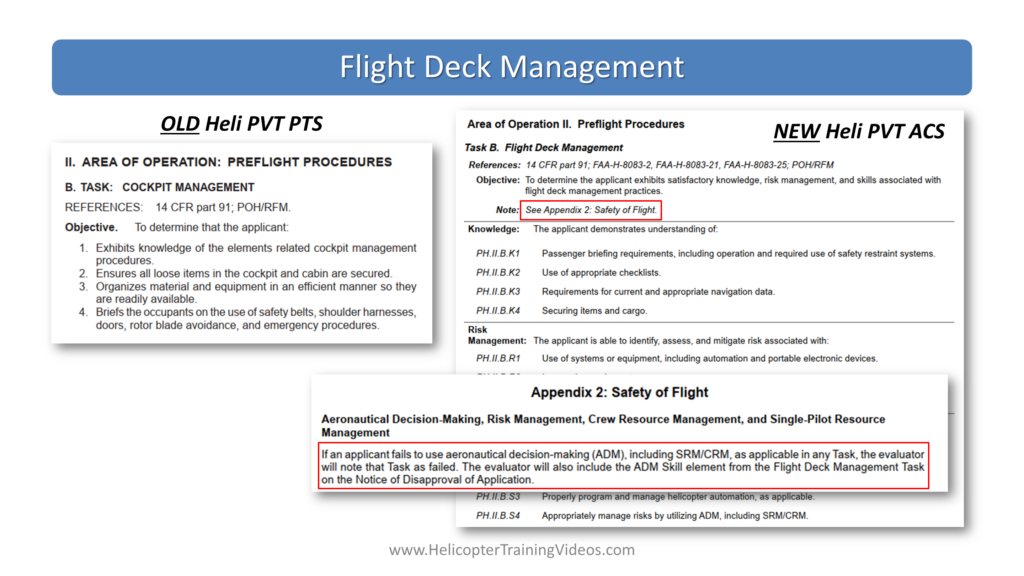
Extra Required Task – Go Arounds
In the Area of Operations (AOO) V – Takeoffs, Landings and Go-Arounds, the Helicopter Private Pilot ACS now requires the Go-Around task (before it was an optional task). This is a relatively easy task, often performed on checkrides anyway, due to traffic, too steep, etc.
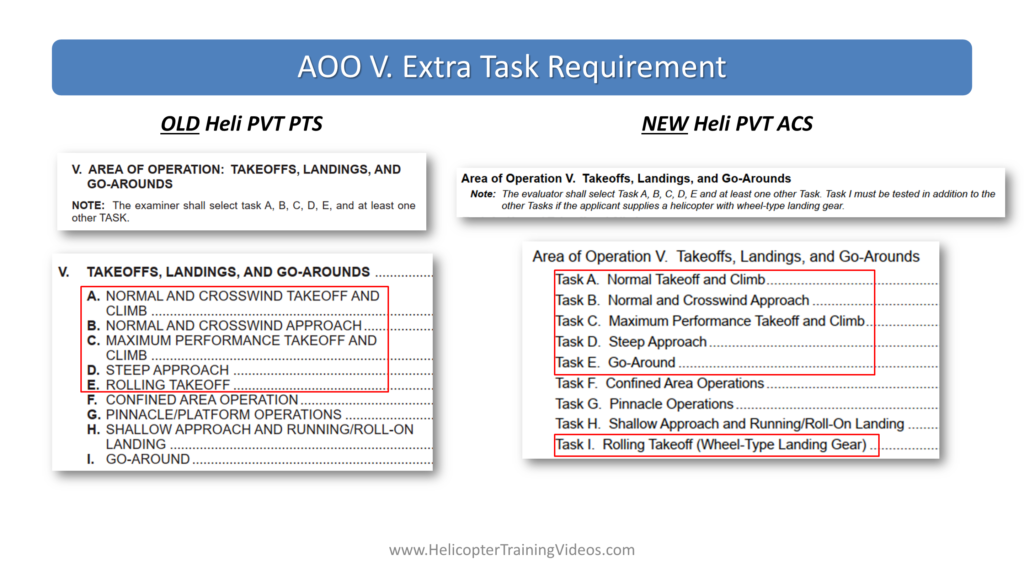
New, Renamed & Reordered Tasks
A big part of the changes from PTS to ACS is the renaming, reordering, removing and adding of tasks. The following is summary of the changes for the Helicopter Private Pilot from PTS to ACS for each area of operation (AOO). This is just the task name & order changes – full details of what elements actually changed within every task is for a future video & article.
I. Preflight Preparation Tasks
Task A is renamed from Certificate and Documents to Pilot Qualifications because the task items that related to the aircraft certificates and documents were moved into Task B (Airworthiness Requirements) and Task A became pilot-focused.
Task H was renamed Human Factors from Aeromedical Factors, but the content area is mostly the same (more info on that in a future article/video).
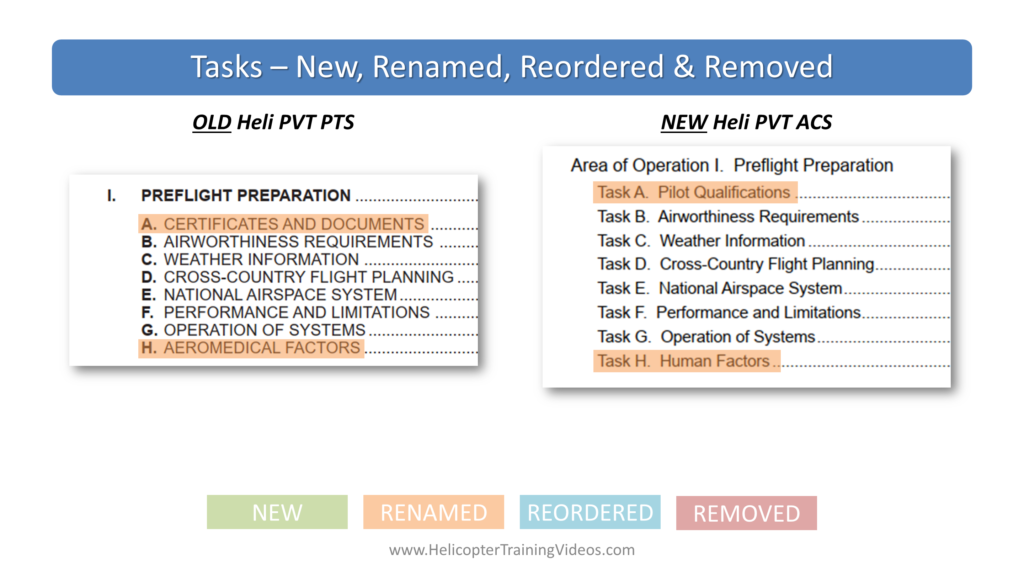
II. Preflight Procedures Tasks
Some minor tweaks to the task names here, including replacing engine with powerplant (probably to future-proof as we move to electric propulsion, etc.)
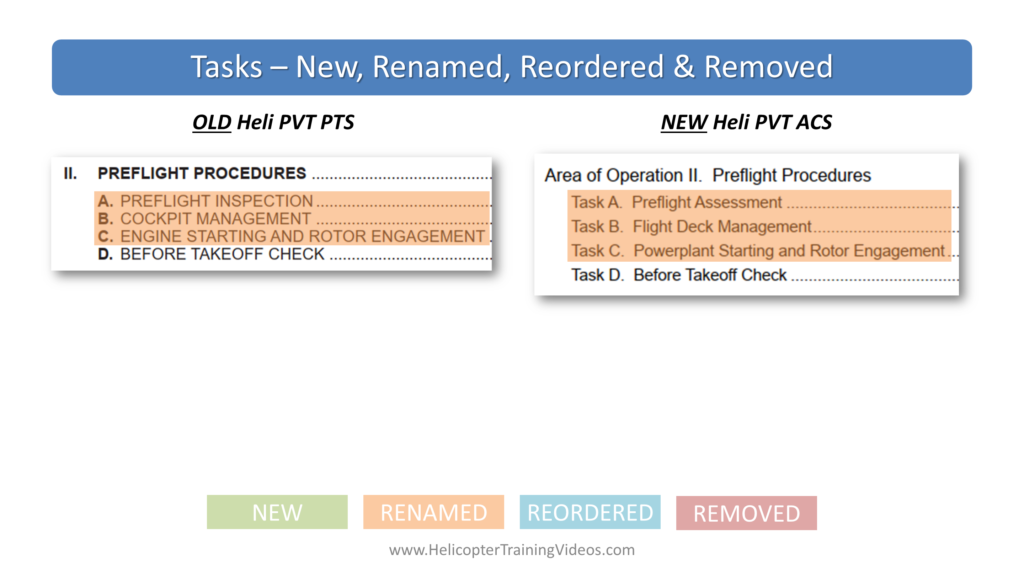
III. Airport & Heliport Operations Tasks
Some reordering and renaming, in particular adding Runway Status Lighting Systems to the communication task name. That would include lighting that communicates to the pilots such as the
Runway Entrance Lights (RELs) which provide visual signals to aircraft crossing or entering a runway from intersecting taxiway and the Takeoff Hold Lights (THLs) that provide visual signals to aircraft in position for takeoff. We go into all the details in the next article/video but this is an area to study in the AIM and the FAA Runway Status Light Systems webpage.
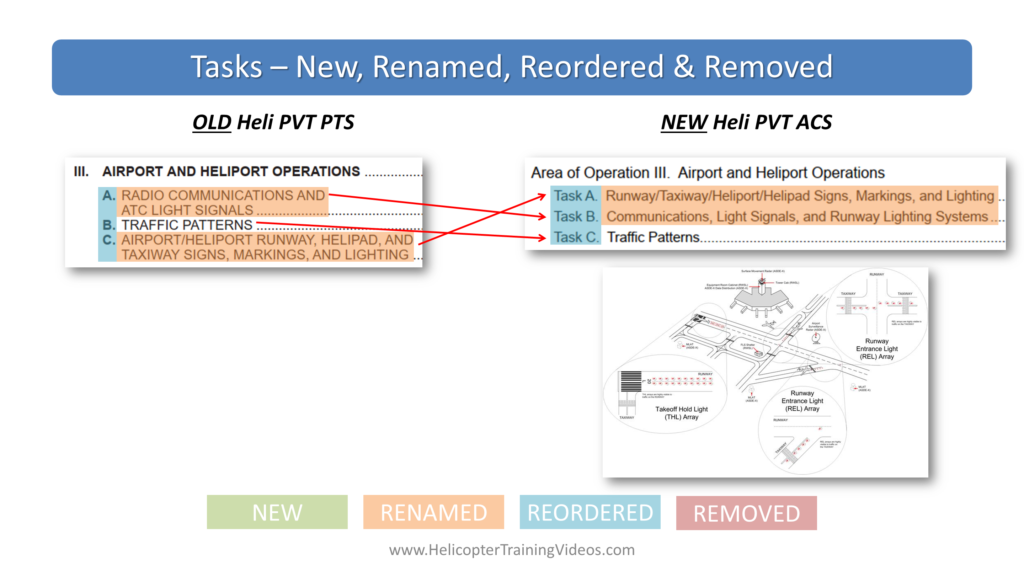
IV. Hovering Maneuvers Tasks
Some reordering and a minor name change to clarify surface taxi is for helicopters with wheels only.
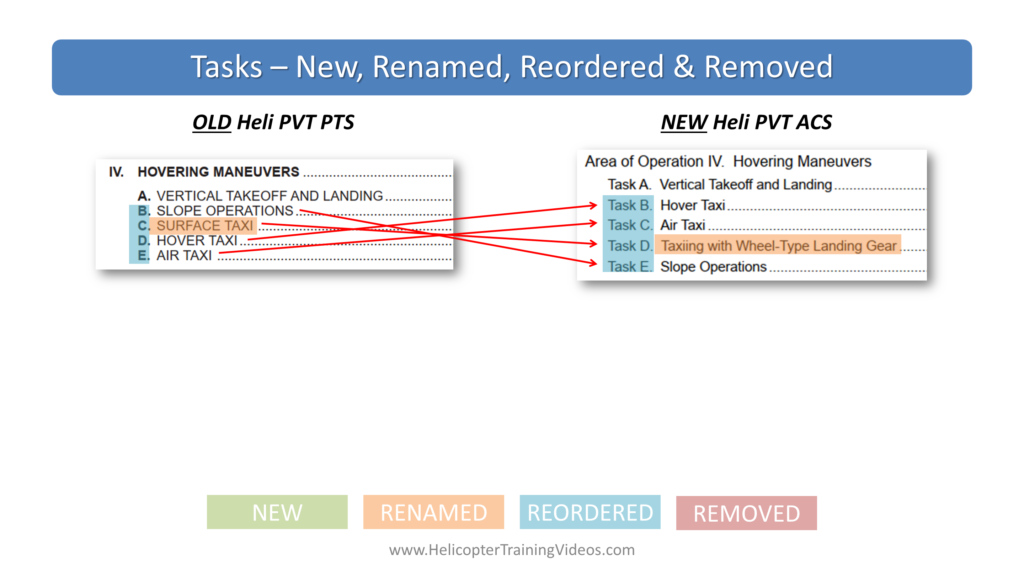
V. Takeoffs, Landings and Go-Arounds Tasks
Tasks from E onward have been reordered and couple have had minor tweaks to their names. The takeoff task have “crosswind” removed from task name, but crosswind is still part of the task. Also it is strange that they left “crosswind” in the approach task. They also removed “platform” from the pinnacle operation task title, but still mention “platform” in task elements. They also added clarity to rolling takeoff task only being for wheeled aircraft. As always the actual content changes of every task are covered in a future article/video.
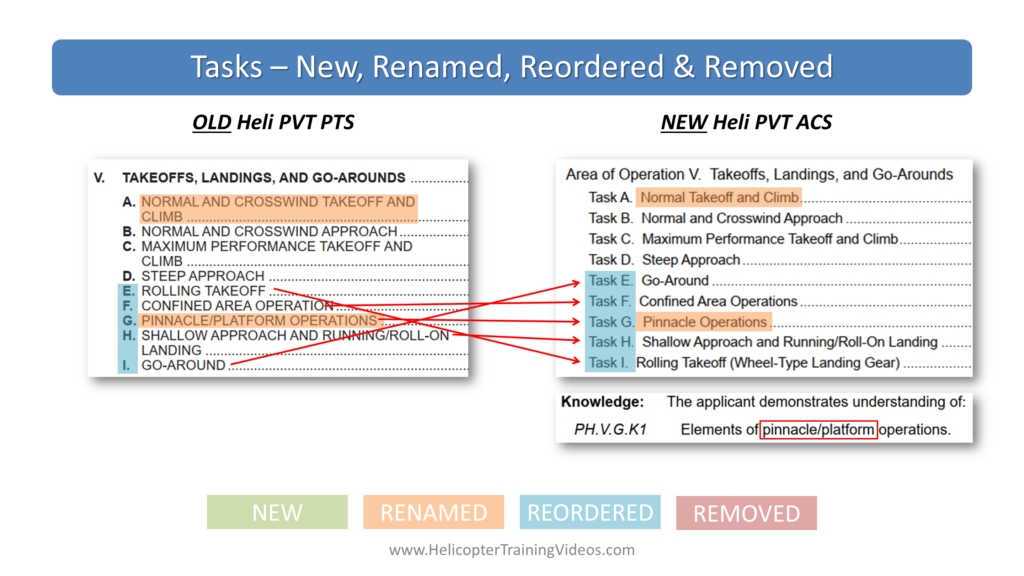
VI. Performance Maneuvers Tasks
FAA has gone back to using “Quick Stop” as a way to describe a rapid deceleration maneuver. They also added “Single Engine” clarification to both autos. They renamed 180 autos to be autos “with turns” – but it is still the same task essentially – you must end up 180 degrees from entry, just added clarification that it can be multiple turns to make your spot, not just one continuous 180 degree turn. We cover this change in more detail in a future article/video.
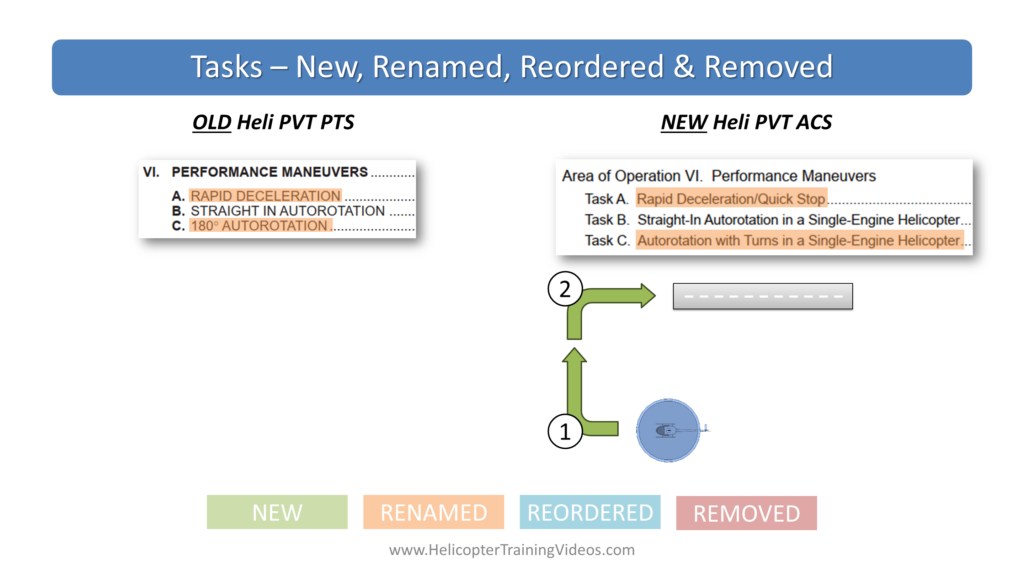
VII. Navigation Tasks
No changes to the task names or orders in the Navigation area of operation. But remember, that is just the task titles, the content of every task will be covered in the next article & video.
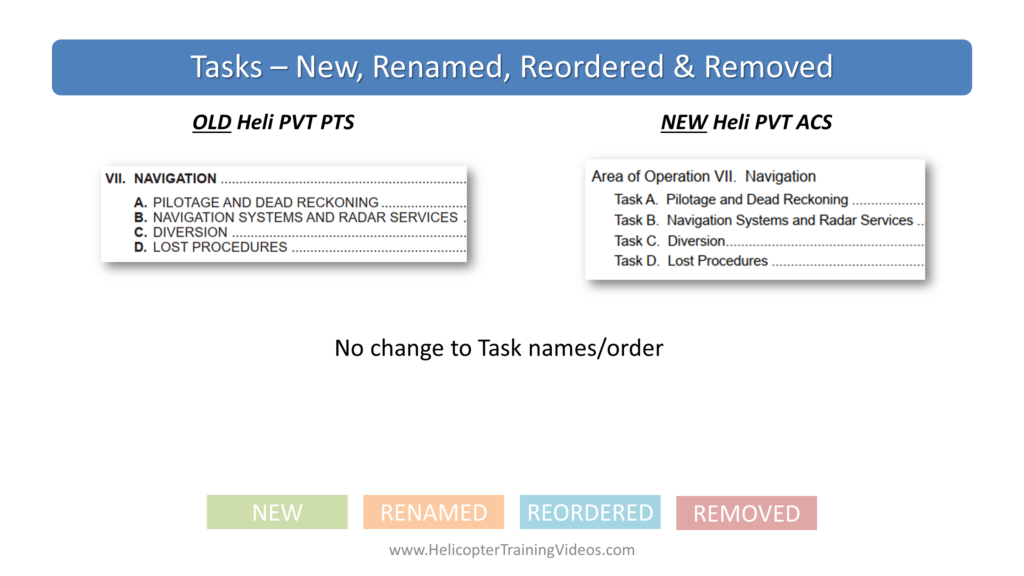
VIII. Emergency Operations Tasks
They added clarification that autorotation tasks will be in a a single engine helicopter. A new task was added for single engine approach in multi engine helicopters. I am not sure how many people are trying to get their private pilot certificate in a twin, but there it is. The addition of that task pushed all other tasks down one but the order remained the same.
Settling-with-power was renamed to vortex ring state (rightly so in my opinion). And the last two minor tweaks were spelling out what “G” means in low G and what “RPM” means. I think applicants probably already know those things if about to take checkirde but hey…
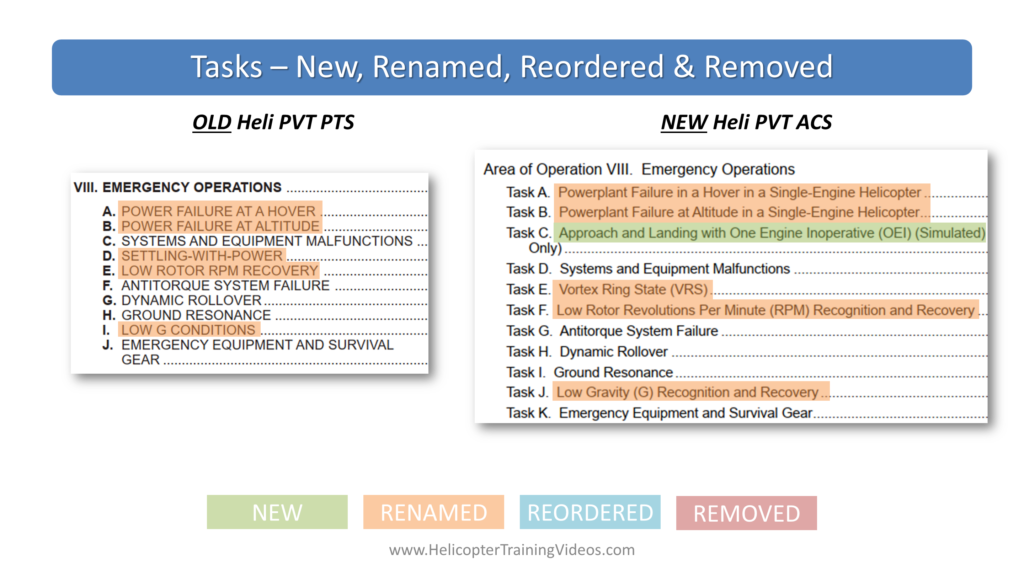
IX. Night Operations and X. Postflight Procedures Tasks
There was a minor change to the night task name from “preparation” to “operations”.
And in the Postflight Procedures area of operation they added “parking” to the After Landing task – it was already an element in the PTS, they just bumped it up to the title in the ACS.
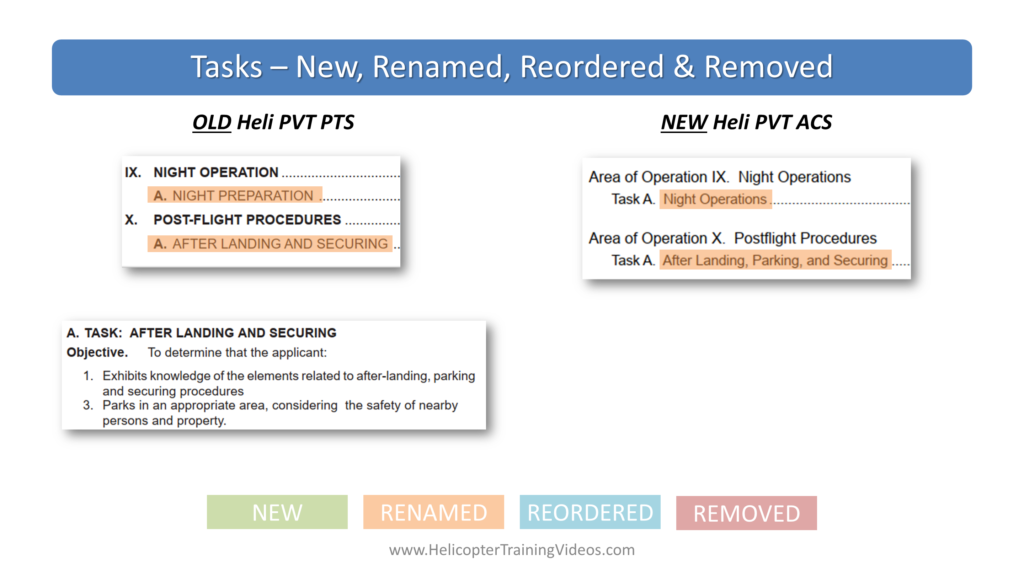
More Info
The next article/video will dig deep in to every task and show the specific element changes. Until then, to learn more about the change from Helicopter PTS to ACS, check out the following:
- Helicopter ACS General Changes Video and article
- Helicopter ACS Playlist (Full Details for PVT, COM, INST & CFI Changes)
- FAA Airmen Certification Standards
- ACS Companion Guide for Pilots (Nov 2023)
- Short WINGS course on ACS
- LSR (PTS) Codes List
- ACS Tips for Evaluators (includes SBT ideas)
If you want to purchase the paper versions below are Amazon affiliate links that help support HTV. Paper versions also come with the ACS Companion Guide for Pilots (FAA-G-ACS-2).
DISCLAIMER – make sure you are fully informed on the latest regulations and their application.
For official guidance on laws and regulations, refer to your Certified Flight Instructor (CFI) or local Flight Standards District Office (FSDO) . Helicopter Training Videos aims to promote aviation knowledge and safety but makes no guarantees regarding accuracy or legal applications.
Feedback
What big changes to the Helicopter Private Pilot ACS have you seen? Let us know using the comments form below:




